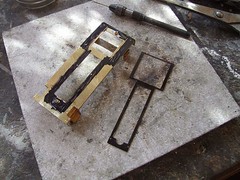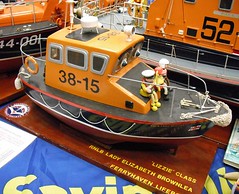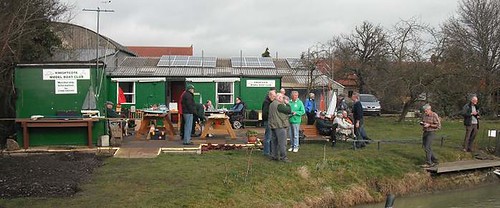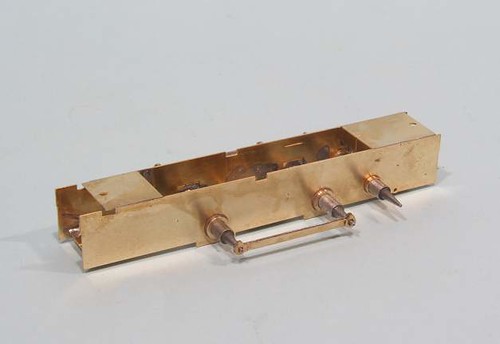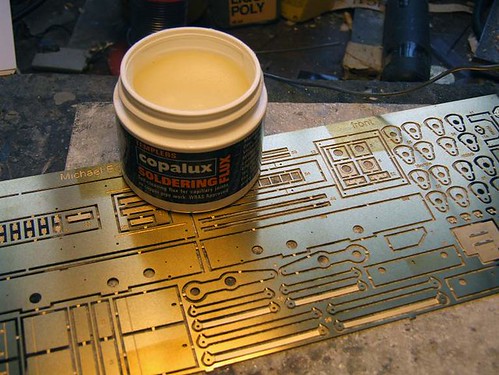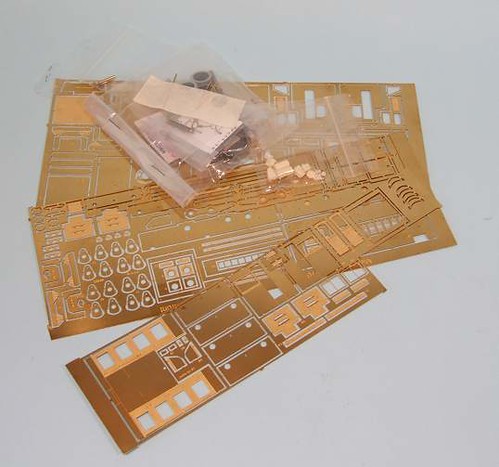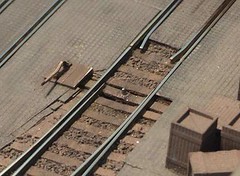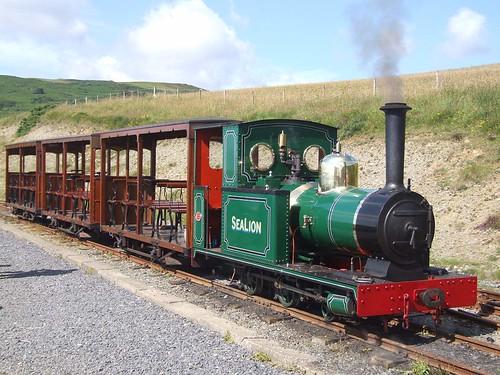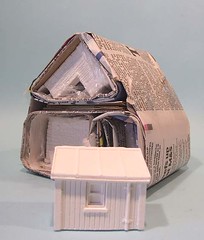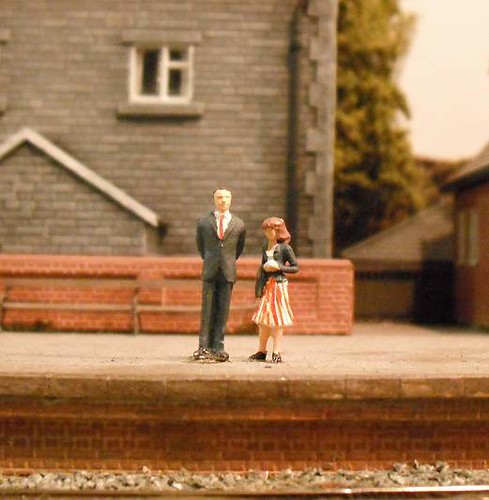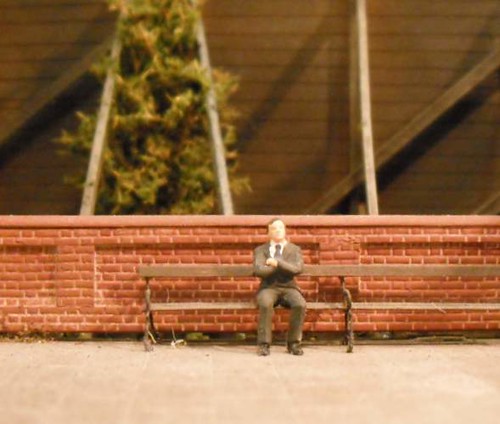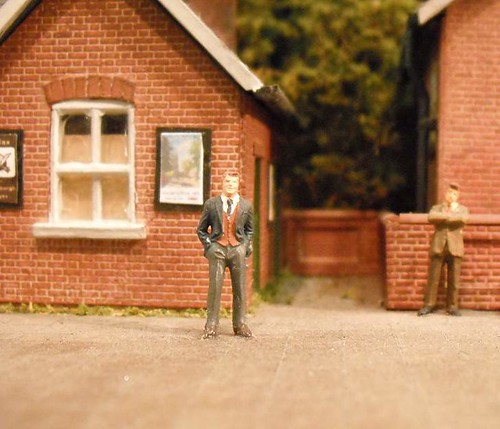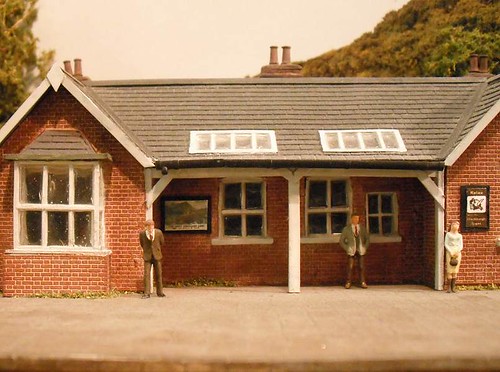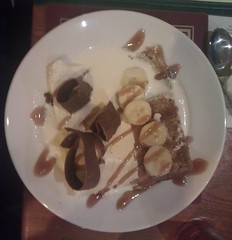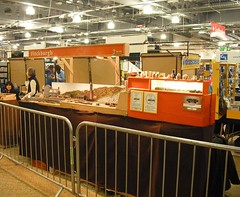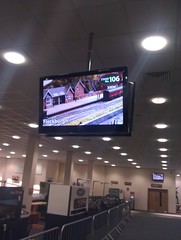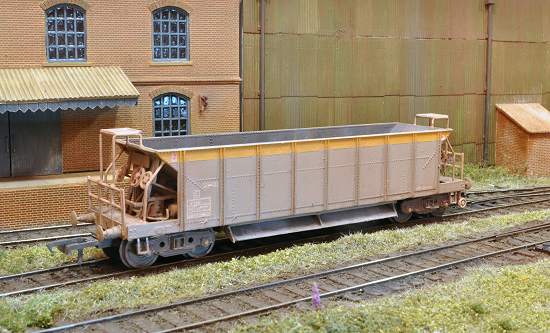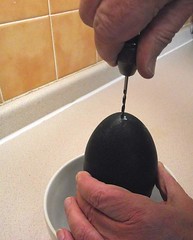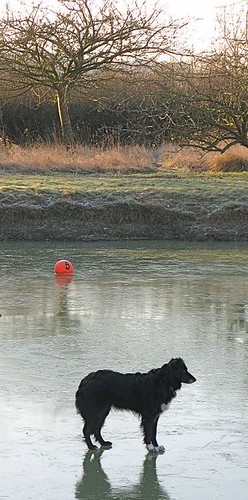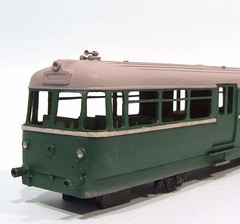
Step 1 - Pull up to the garage door, or behind another car in a traffic jam, anywhere you can see the reflection of the your headlights. Realise that one of them isn't working. Swear a bit, turn the lights off and take the key out of the ignition.
Step 2 - Go to your local motor store and buy a replacement bulb. The photo shows the one I got from Halfords for just under 14 quid. Buying a pair makes sense and there is little difference in cost between 1 and 2. More to the point, once one bulb has gone, the other can't be far behind and having a spare is never a bad thing.

Step 3 - I'm doing the driver side (UK car) bulb. Which is behind the filler pipe for the washer bottle.
At first sight, this is really going to restrict access, but for a change, someone at the car plant realised this and did something very helpful although if you have filled the washer bottle right to the top of the pipe, you might not think so.

Step 4 - The pipe unclips, you can see the bulge in the photo, from the bottle. I slid my hand down it and tugged at the clip, then wiggled the pipe and it came away.
Get your feet out of the way before doing this if you filled up to the brim.
Step 5 - Locate the wire to the back of the bulb.
To help, I've arrived it in the picture above. You might find a small torch handy as it's quite dark down there.

Step 6 - Unplug the wire. This will come away with fingers and a bit of wiggling. The bulb is held in with a spring clip so it will wobble as you do this.
Step 7 - Peel away the rubber weather protector. It will probably grip the bulb but tug and you'll get it away.
Before you do, note how it sits over a rim at the back of the light fitting. It's an important parts as without it, the headlights will fill with muck off the road. If the rubber has split, give the thing a wash and try to glue the split. Let it dry before putting it back in place.
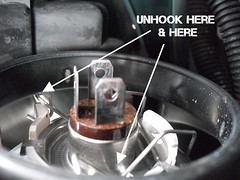
Step 8 - Unclip the spring clip holding the bulb in. To do this, unhook the wire either side of the bulb. Carefully, those clips are plastic. Mind you, the spring is pretty stiff.
Step 9 - Take the old bulb out and replace it with a new one. DO NOT touch the glass of the new bulb. Halogen blulbs don't like finger grease on them and it can shorten thier life.
Step 10 - Clip the bulb back, plug it in and check the lights now work. If they don't, make sure the plug is properly seated. If that still doesn't work, you are into checking for power in the contacts. It might be worth checking the isn't any muck in the plug first.
Step 11 - Assuming all is well, unplug the bulb, put the rubber seal back pushing it home firmly to keep the weather out, plug the bulb in again and pop the washer bottle tube back in place.
Step 12 - Try the lights again. If all is well, have a cup of tea. If not, check the plug again. Then have a cup of tea and a biscuit.
Legal note: This is an accurate description of what I did. I am not a professional mechanic and these notes are offered for entertainment only. If you chose to follow them and things don't work, it's not my fault. Sorry. If you are at all unsure then get a professional to do the job. The car used was a 1996 206, other models may be different.

